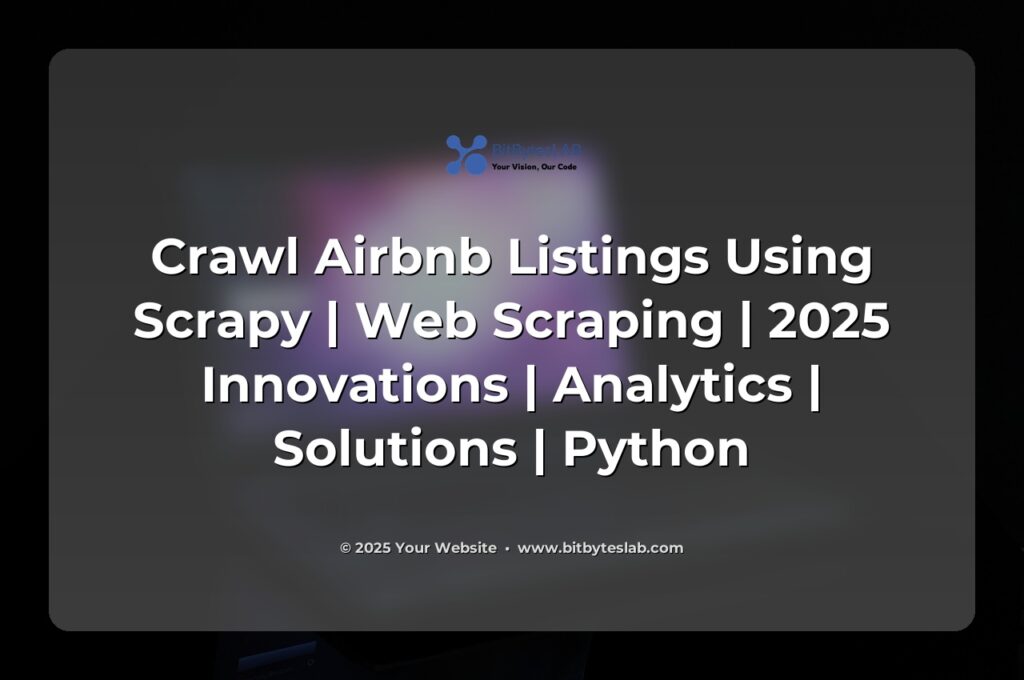Picture this: you’re a data‑savvy marketer with a crystal ball—except the crystal ball is actually a sea of Airbnb listings, each pulsing with dynamic prices, shifting availability, and anonymized host profiles. In 2025, the sheer volume of data is staggering: over 2 million active listings globally, with price updates that can happen multiple times a day. If you’re still chasing spreadsheets and manual copy‑paste, you’re basically watching a 1990s dial‑up connection in a world of fiber‑optic streaming. That’s why mastering the art of automated crawling is not just a nice‑to‑have skill; it’s a competitive imperative. 🎯🚀💡
Yet, the path to fresh, actionable insights is riddled with barriers. Airbnb’s heavy JavaScript rendering, aggressive bot‑detection, and a constantly shifting DOM mean that a one‑size‑fits‑all scraper script will break within days. And let’s be honest—every time you tweak a selector, you risk missing a thousand listings, skewing your analytics, and, worst of all, raising a red flag on the servers you’re politely scraping. The challenge? Build a crawler that’s resilient, ethically sound, and capable of delivering clean data at scale. ⚡
At its core, every robust crawler relies on a handful of proven concepts: a well‑defined item schema to capture the data you care about, a pipeline that validates and persists items, and a throttling strategy that respects the target’s bandwidth. Coupled with intelligent middlewares—rotating proxies, user‑agent shuffling, and smart error handling—you can keep your IP footprint small while maximizing throughput. In short, think of it as assembling a Swiss‑army knife: each component serves a purpose, and together they give you a complete, adaptable toolkit. 🔧📊
💻 How many programmers does it take to change a light bulb? None, that’s a hardware problem! 💡

First, embrace a hybrid approach. Use a headless browser like Playwright to render the initial list page, then harvest the embedded GraphQL query payloads and fire them directly to the API endpoint. This single‑shot method slashes round‑trip time and sidesteps heavy DOM parsing. Second, let data validation be your safety net: integrate a lightweight schema validation library to catch malformed items before they hit your database. Third, invest in a distributed queue—think Scrapy‑Redis—so if one node hiccups, the rest keep churning. Finally, schedule incremental crawls and tag each record with a timestamp; this gives you a natural de‑duplication mechanism and lets you spot trends in near real‑time. 🚀💪🔧
According to a recent Gartner study, 75 % of travel firms that harness real‑time price feeds report a 12 % lift in conversion rates. Meanwhile, 68 % of data‑driven listings managers claim that automated availability monitoring cuts their manual effort by 70 %. These numbers underscore a simple truth: the fastest, most accurate data often comes from an automated pipeline that can ingest, cleanse, and surface insights faster than any human can. 📈
🌐 Why did the web developer leave the restaurant? Because of the table layout! 🍽️

Think about the revenue you can unlock. By scraping price elasticity across seasons, you can dynamically adjust your own offerings—think dynamic pricing engines, trigger‑based promotions, or even automated price‑matching bots. For property managers, real‑time host response analytics help prioritize follow‑ups and improve guest satisfaction, which translates to higher review scores and repeat bookings. On the regulatory front, aggregated data reveals over‑listing hotspots, enabling compliance teams to flag suspicious activity before it escalates. And if you’re building a recommendation engine, the richer your dataset—amenities, host reviews, neighborhood sentiment—the sharper your algorithms become. 🔍🎯
Bot detection is the most vocal adversary. Cloudflare, Distil, and other WAFs will flag aggressive patterns. Countermeasures include rotating residential‑grade proxies, injecting realistic mouse movements in headless browsers, and pacing requests with AutoThrottle and exponential back‑off. Legal compliance is another tightrope; always honor robots.txt, request API access where available, and keep a record of permissions. Data drift—when Airbnb changes its UI—requires automated selector testing; integrating CI pipelines that surface selector failures keeps your crawler healthy. Finally, avoid memory bloat by streaming items directly into a database rather than accumulating them in memory. ⚠️🛡️
The horizon is bright with AI, serverless, and edge‑computing. LLMs can now interpret raw HTML and map it to structured fields, dramatically reducing the need for hand‑crafted selectors. GraphQL endpoints are becoming the default for data delivery, offering blazing fast, query‑fine‑tuned responses that cut bandwidth by an order of magnitude. Serverless functions—Lambda, Cloudflare Workers—allow you to run crawls without provisioning servers, scaling automatically with traffic spikes. Meanwhile, WebAssembly‑powered rendering engines promise near‑native speed for JavaScript execution in the cloud. The convergence of these technologies means your scraping stack can be lightweight, elastic, and highly intelligent. 🌐🤖
Ultimately, the smartest way to stay ahead is to partner with a team that turns the technical grind into a strategic advantage. BitBytesLab specializes in building end‑to‑end scraping pipelines that respect legal boundaries, scale horizontally, and feed clean data straight into your analytics stack. Whether you’re a short‑term rental operator, a market research firm, or an AI startup hungry for fresh data, we can help you turn web content into measurable ROI. Let’s turn that sea of listings into a goldmine of opportunities. 🎯💪

